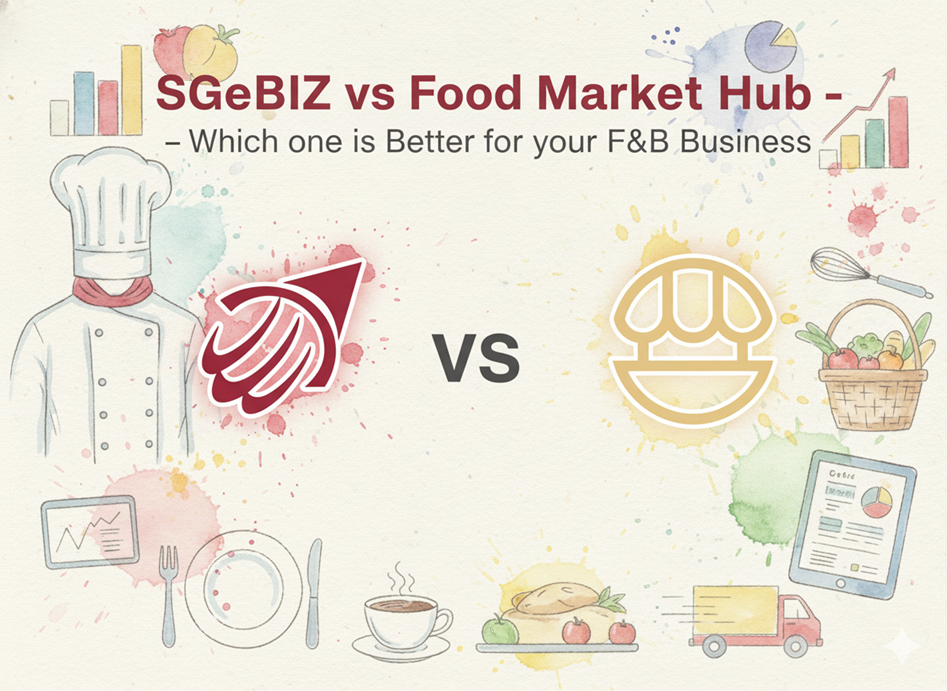How to Choose the Best Restaurant Back-of-the-House Software

When people walk into your restaurant, they see the dining tables, the food on the plates, and the waiters. But behind that experience is something just as important—your restaurant's back of the house. This part of your restaurant works quietly behind the scenes. And even though customers may never see it, it affects everything—from how fast food gets prepared to how much profit you take home.
If you want to grow your business and save costs, then you need to take control of your restaurant's BOH (back of house). Let’s talk about what happens in the back, why it matters, and how you can manage it better using smart tools in Malaysia.
What Is Restaurant Back of the House?
The back-of-the-house restaurant includes everything that’s hidden from the customer’s view. This is the part where your team works to cook food, wash dishes, store inventory, and manage supplies. It includes your kitchen, storage area, cold room, staff changing room, and even your back office where you check reports and order stock.
The back of the house is the brain and backbone of your business. If something goes wrong here—maybe a missing ingredient or a machine breakdown—your service at the front will also suffer. Customers will wait longer, food quality may drop, and your costs will go up without you even realising.
What Happens in the Back of the House?
Many daily activities happen in the restaurant's back of the house, and they need to run smoothly. Here are some important processes:
1. Food preparation and cooking:
Your chefs handle all prep work—chopping, marinating, cooking, and plating. If this flow breaks, your kitchen gets delayed.
2. Inventory and stock management:
Ingredients come in, are stored, and then used daily. If your back kitchen doesn’t track usage properly, you may face waste or shortages.
3. Staff management and scheduling:
Most of your kitchen team works in the back of the house. You need to plan their shifts, check attendance, and handle their roles during rush hours.
4. Equipment and maintenance:
All your machines—like ovens, fryers, and chillers—sit in the back. Keeping them in good shape is part of the BOH tasks.
5. Hygiene and cleanliness:
Back of the house is also where dishwashing, garbage handling, and deep cleaning take place. This keeps your food safe and your restaurant compliant with local health rules.
Why You Must Manage the Back of House Properly
In Malaysia, food costs can take up over 30% of your total sales (Source: Malaysia SME Food Report, 2023). If your back-of-house is not well-managed, that percentage can rise quickly. You might be buying extra stock without knowing it. Or worse, staff may be stealing ingredients without being noticed.
By tracking and managing your restaurant BOH, you control:
Food cost: Knowing how much you use and waste helps you adjust your stock orders.
Staff productivity: You can make sure your team is working efficiently and not just standing around.
Profit margins: Small improvements in the back of the house often lead to bigger profits in the front.
Compliance: Clean kitchens and clear reports help you pass DBKL health inspections easily.
According to the Department of Statistics Malaysia, the food and beverage services industry recorded RM47.76 billion in income for Q4 2023. With increasing costs of ingredients and labour, you can’t afford to let the back of your restaurant go unmanaged.
How to Choose the Right Back-of-the-House Software
You might already be using a POS system for sales, but managing the back-of-the-house restaurant needs something more. You need a restaurant back-of-house software that connects your kitchen, your inventory, and your team. Here's how to choose the right one:
It should track inventory in real time.
You need to know what comes in, what goes out, and what is wasted. A good software will alert you when items are low and even help you order more with a few clicks.
It should help with recipe costing.
When you prepare a dish, you should know how much it costs you in ingredients. This helps you set the right selling price. A good system calculates it for you automatically.
It should support your kitchen team.
Your kitchen staff should be able to view orders on a digital screen, update item status, and avoid missing items during busy hours.
It should be easy to use.
If the software is too complicated, your staff won’t use it. Make sure it works in Bahasa Malaysia and supports your local team.
It should give clear reports.
You should be able to open your phone or laptop and see what’s going on in your kitchen, daily usage, staff performance, and cost details.
One example you can look into is Food Market Hub, which offers a system that covers the back of house. You can integrate it with your restaurant's front of the house, too, so that you can connect your front of the house and back of the house of your restaurant seamlessly. You can monitor your kitchen stock, recipe cost, and food wastage all in one place. Plus, it’s made for businesses in Malaysia, so it supports local pricing, taxes, and even your preferred language.
Why Back of House Management Affects Your Profits
Many food businesses focus on getting more orders, but that’s not enough. If your kitchen is leaking money through overbuying, theft, or spoilage, your profit will still suffer.
By managing your restaurant BOH, you:
Waste less, Work faster, Serve better food, Train staff better, Save money
It’s simple: better back-end control means smoother service, happier customers, and stronger income.
Research by Restaurant Business Magazine (2023) shows that food outlets that use back-of-house tech can reduce their food cost by up to 15%. That can save you RM1,500 for every RM10,000 spent on stock. Imagine what you could do with that extra money each month.
Your restaurant's back of the house may be out of sight, but it should never be out of your control. This is where your money is saved, or lost. With the right system and a little attention, your kitchen can become more than just a place to cook food—it can be the reason your food business grows steadily month after month.
Don’t wait until you face problems. Start managing your restaurant BOH today and watch how quickly you gain control, save money, and serve better food.










